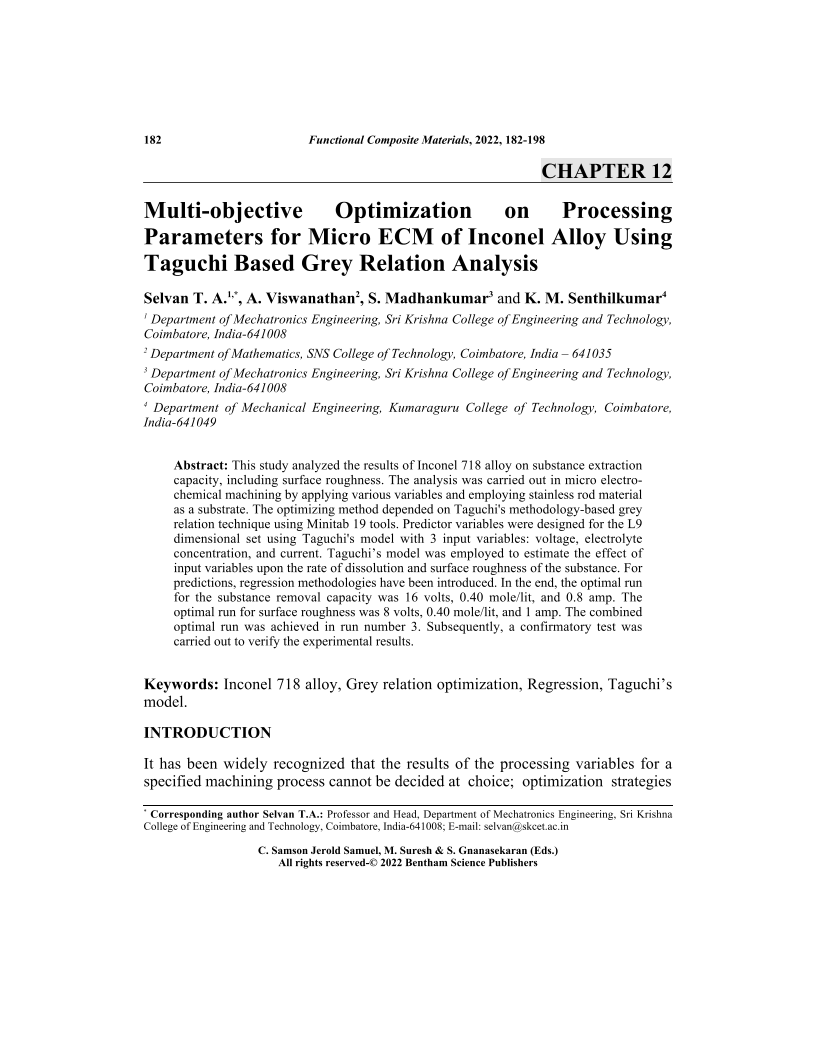Multi-objective Optimization on Processing Parameters for Micro ECM of Inconel Alloy Using Taguchi Based Grey Relation Analysis

- Authors: Selvan T. A.1, A. Viswanathan2, S. Madhankumar3, K. M. Senthilkumar4
-
View Affiliations Hide Affiliations1 Department of Mechatronics Engineering, Sri Krishna College of Engineering and Technology,Coimbatore, India 641008 2 Department of Mathematics, SNS College of Technology, Coimbatore, India 641035 3 Department of Mechatronics Engineering, Sri Krishna College of Engineering and Technology,Coimbatore, India-641008 4 Department of Mechanical Engineering, Kumaraguru College of Technology, Coimbatore,India-641049
- Source: Functional Composite Materials: Manufacturing Technology and Experimental Application , pp 182-198
- Publication Date: April 2022
- Language: English
Multi-objective Optimization on Processing Parameters for Micro ECM of Inconel Alloy Using Taguchi Based Grey Relation Analysis, Page 1 of 1
< Previous page | Next page > /docserver/preview/fulltext/9789815039894/chap12-1.gif
This study analyzed the results of Inconel 718 alloy on substance extraction capacity, including surface roughness. The analysis was carried out in micro electrochemical machining by applying various variables and employing stainless rod material as a substrate. The optimizing method depended on Taguchi's methodology-based grey relation technique using Minitab 19 tools. Predictor variables were designed for the L9 dimensional set using Taguchi's model with 3 input variables: voltage, electrolyte concentration, and current. Taguchi’s model was employed to estimate the effect of input variables upon the rate of dissolution and surface roughness of the substance. For predictions, regression methodologies have been introduced. In the end, the optimal run for the substance removal capacity was 16 volts, 0.40 mole/lit, and 0.8 amp. The optimal run for surface roughness was 8 volts, 0.40 mole/lit, and 1 amp. The combined optimal run was achieved in run number 3. Subsequently, a confirmatory test was carried out to verify the experimental results.
-
From This Site
/content/books/9789815039894.chap12dcterms_subject,pub_keyword-contentType:Journal -contentType:Figure -contentType:Table -contentType:SupplementaryData105

